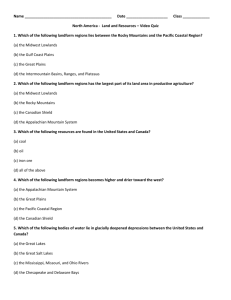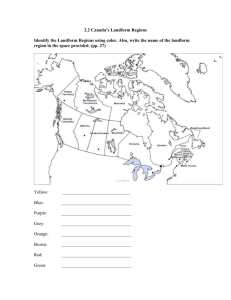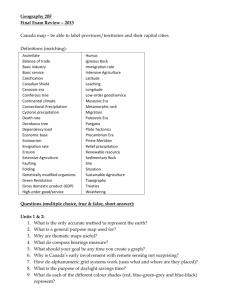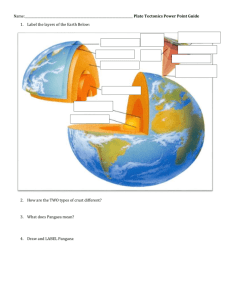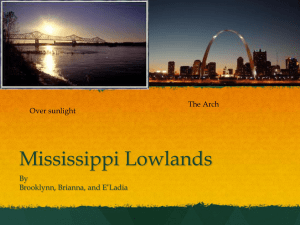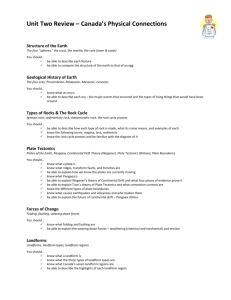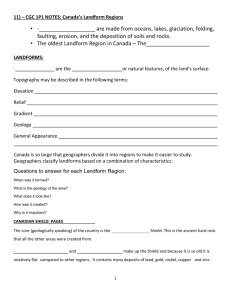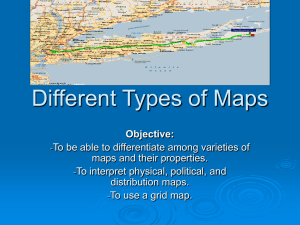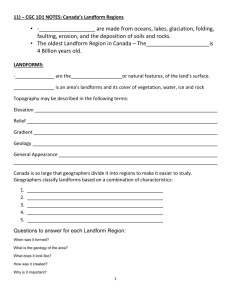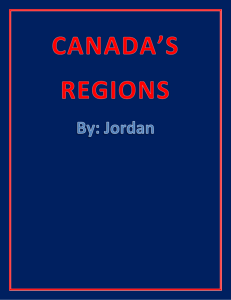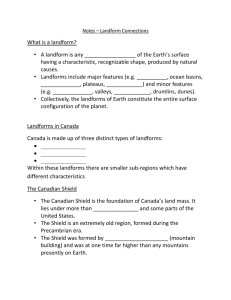understanding landform patterns - Grand Erie District School Board
advertisement
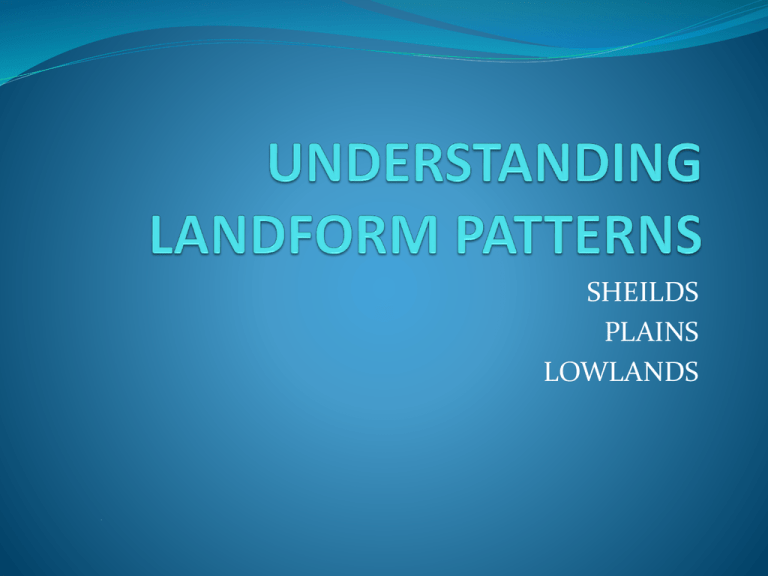
SHEILDS PLAINS LOWLANDS hi LANDFORM PATTERNS Geographers are interested in patterns o the earth. They use arrangement of cities, landforms, or river systems to help them identify unique regions. You learned that most active volcanoes are located at plate boundaries, especially around the Pacific Ring of Fire. We will be discussing examples of landform patterns in North America – such as shields, plains, and lowlands Plate Tectonics PLATE TECTONICS – the theory that all the continents were once joined together and are gradually drifting apart. During the earth’s 4.6 billion – year history, land masses have been built up and then worn away many times. Scottish geologist James Hutton first advanced this idea in 1785, but most scholars rejected it. At the time, scientists thought the earth was only 6000 years old, but this was too little time for so much change to have happened. PANGAEA German geographer Alfred Wegener was another landform pioneer. In 1912, he proposed that all of the continents were once joined together in on huge land mass named Pangaea. His theory was also criticized, but is now considered a key to understanding landform patterns. The modern theory of Plate Tectonics is built upon Wegener’s work SHIELD REGIONS Pangaea was built around old shield regions. These regions were created by widespread volcanic activity billions of years before. They are largely composed of igneous rock; that is, solidified magma. Later, heat and pressure altered some parts of these old shield regions. This formed metamorphic rock, or changed rock. As Pangaea broke apart, the shield regions were scattered across the earth as the core of the continents. Today, they are heavily worn and carved by the relentless forces of erosion – water, ice, and wind. PLAINS AND LOWLANDS REGIONS The erosion of the shield regions created the rest of the continent Rivers and glaciers carried eroded material, called sediment into ancient seas. There, it accumulated into thick beds that slowly solidified into sedimentary rock – (thick beds of sediment that have slowly solidified into rock) New land emerged around the ancient shields as the seas filled in. These plains and lowlands are underlaid by horizontal layers of sedimentary rock. Plains are broad areas of level land, such as the great plains region of central North America. Lowlands are plains located along coastlines , for example, the Great Lakes – St. Lawrence Lowlands

